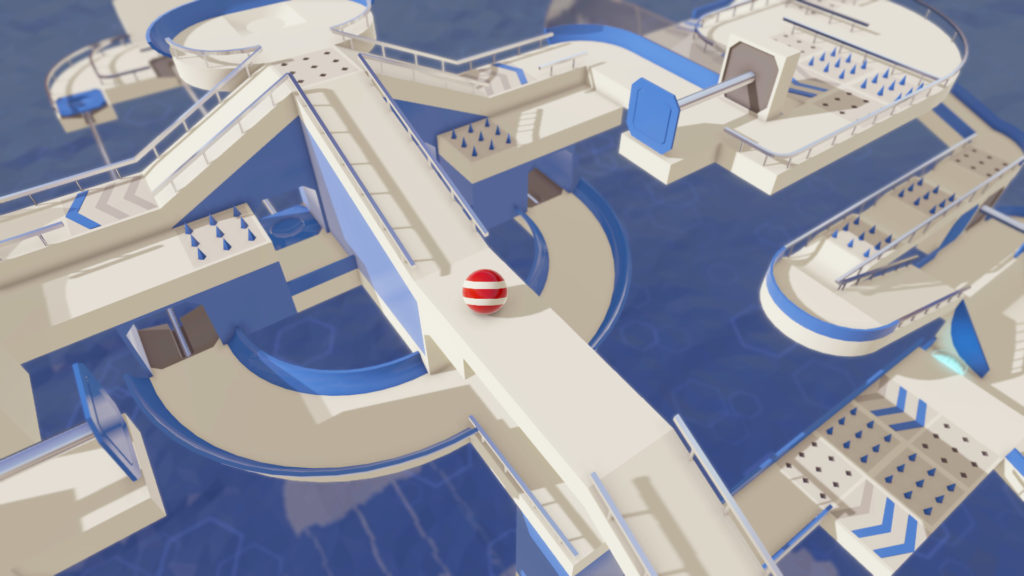The Little Ball That Could
Creating and launching a multi-platform game, covering the visual design, product design and game design was a true challenge!

About the project
As an evolution of the Marble Madness formula, The Little Ball That Could was a challenging project that required dealing with three distinct UI and UX paradigms. Given the fact that the game is available for smartphones, desktop PCs and consoles, it was required to investigate and apply design principles per-platform, while keeping the unified style specific to the brand. Performing A-B testing, direct observation and collecting survey data on UI flow intuitiveness was a top priority. A strong emphasis was put on input feedback and subtle visual effects in the UI that reinforced the ultra-minimalist art style of the game itself – for instance, the dominant accent color would change as the new worlds are unlocked, and the main menu scene would change as well.
Modelling: For The Little Ball That Could, it was necessary to create highly scalable, low-poly modules that would work on mobile as well as high-end systems. I created each of the 121 levels using 191 structural models. In addition, I needed to create 67 modules to be used in the mechanisms placed around the levels, and 16 unique props.
Textures: The game required a limited number of textures due to its flat, solid-color-driven aesthetic. I designed 11 textures for the environments, 20 decals and 25 character textures. All textures (including Metallic & Emission maps) were done in Photoshop.
Pipeline: I designed the level layouts in 3DS Max. I imported the models, created materials and prefabs, and placed props in-engine. I set up collision boxes, physics materials and rigidbodies. I designed the scene lighting (using Realtime Global Illumination on desktop). I configured the post processing package (Color Grading, Ambient Occlusion, Bloom, Reflections). In the end, I modified the Standard Shader to add an X-Ray Outline pass and double-sided features, created particle FX, mechanism and pickup animations in Unity.
Responsibilities
UX Design, UI Design, Game Design, 3D Modelling, Texturing, Level Assembly, Lighting, Post-processing
Tools & Methodology
3D Studio Max, Substance Painter, Adobe Photoshop, Unity